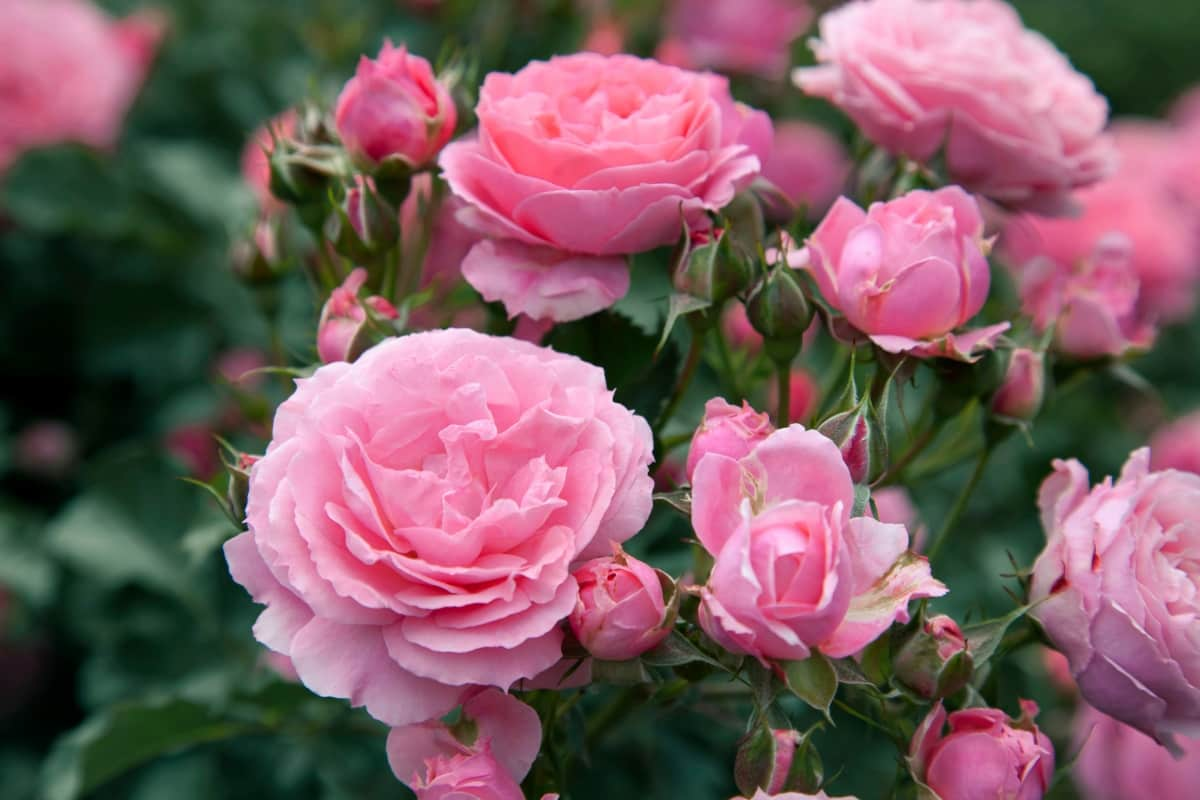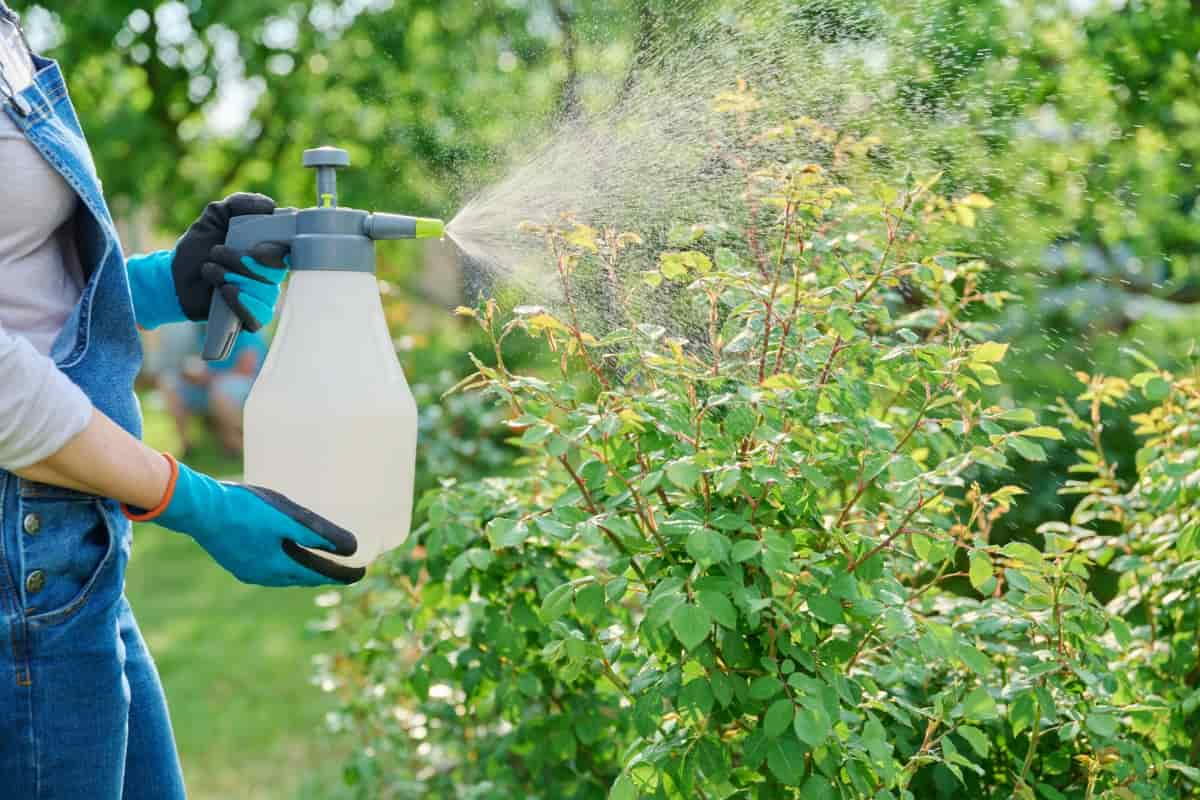Roses, with their lush petals and enchanting fragrances, are a highlight of any garden, but the common problem of powdery mildew can compromise the beauty of these flowers. This fungal issue manifests as a dusty white coating on leaves and stems, hindering the plant’s vigor and diminishing its blooms. Gardeners often grapple with the question: what kills powdery mildew instantly? While instant remedies are rare, effective treatments for managing this condition exist.

Among these, baking soda stands out as a favored powdery mildew treatment, offering a natural, accessible solution. The former is celebrated for its consistency and availability in exploring the powdery mildew baking soda vs. milk debate. This article dives into how baking soda can be employed as a powdery mildew spray recipe, its role as a powdery mildew home remedy, and provides guidance on how to treat powdery mildew on plants, specifically the cherished rose, integrating it into a comprehensive care routine for these beloved blooms.
Baking Soda to Control Powdery Mildew on Roses
Understanding Powdery Mildew on Roses
Powdery mildew is a common fungal problem affecting roses, presenting as a white or gray powdery growth on leaves and stems. It thrives in both high humidity and dry conditions, typically appearing when daytime temperatures are warm and nights are cool. This mildew can weaken plants, distort the leaves, and reduce flowering.
Understanding what kills powdery mildew instantly can be a bit misleading, as most treatments require time to work. Traditional fungicides may be effective, but many gardeners seek out powdery mildew home remedies for a more natural approach to treat powdery mildew on plants.
The Benefits of Using Baking Soda as a Natural Remedy for Powdery Mildew on Roses
Using baking soda for roses offers several benefits, as it’s a readily available, inexpensive, and non-toxic way to manage fungal diseases. It alters the pH on leaf surfaces, making it less hospitable to powdery mildew. This makes baking soda a worthwhile powdery mildew treatment, particularly when comparing powdery mildew baking soda vs. milk.
In case you missed it: How to Use Baking Soda to Prevent Tomato Blossom End Rot

While milk has been touted for its fungicidal properties, baking soda provides a more consistent pH change. It’s important to note that while baking soda can prevent the spread of mildew, it does not kill existing spores; thus, it’s not a cure but a preventive measure.
How to Prepare a Baking Soda Solution for Treating Powdery Mildew on Roses
To create a powdery mildew spray recipe, dissolve one teaspoon of baking soda into a quart of water. Adding a small amount of liquid soap can help the solution adhere to the leaves. This simple concoction is a powdery mildew home remedy that’s easy to make and use. However, getting the concentration right is essential; too much baking soda can harm the plants. Before applying the spray to the entire plant, it is advisable to conduct a preliminary test on a few leaves. Allow a couple of days to observe any potential adverse reactions.
Applying Baking Soda Spray: Best Practices for Controlling Powdery Mildew on Roses
When applying the baking soda spray, it’s crucial to cover all plant surfaces, especially the undersides of leaves, where mildew often starts. Early morning is the best time for application, as this allows the leaves to dry out over the day. Consistency is key; regular weekly applications help keep powdery mildew at bay. While baking soda kills powdery mildew may not be entirely accurate, it certainly can suppress and prevent it when used correctly.
Dos and Don’ts: Tips for Using Baking Soda Effectively against Powdery Mildew on Roses
To use baking soda effectively against powdery mildew, follow these tips: Start treatments early in the season before mildew appears. Do apply baking soda sprays sparingly and not in high concentrations. Do test the solution on a small area first. Don’t apply the spray during the hottest part of the day, as it can cause leaf burn. Please don’t use it on stressed or heavily infected plants, as it can exacerbate the problem. And don’t forget to water your roses at the base to keep the leaves dry, which helps prevent the onset of mildew.
In case you missed it: Benefits of Baking Soda for Houseplants

The Science Behind Baking Soda’s Effectiveness in Managing Powdery Mildew on Roses
Baking soda, or sodium bicarbonate, is effective against powdery mildew because it disrupts the ion balance in fungal cells, hindering their growth. This disruption and the pH change on the leaf surface create an unfavorable environment for powdery mildew to thrive. However, it’s important to remember that baking soda is a preventive measure and not a complete cure. Its effectiveness is maximized when integrated into a comprehensive plant care routine that includes proper spacing, adequate sunlight, and good air circulation around the roses.
Integrating Baking Soda Treatment into a Comprehensive Rose Care Routine
Incorporating baking soda treatments into a holistic rose care plan can bolster your roses’ defenses against powdery mildew. Begin with well-spaced planting to ensure good air circulation, which is vital for keeping the foliage dry and less susceptible to fungal infections. Regularly inspect plants for early signs of mildew and promptly apply the baking soda solution.
Balance this with adequate watering at the base, timely pruning, and the provision of essential nutrients through appropriate fertilization. Blending these techniques incorporates baking soda as a crucial component in a sustainable and eco-conscious method for preserving robust rose plants.
Common Mistakes to Avoid When Using Baking Soda to Control Powdery Mildew on Roses
When using baking soda as a control method for powdery mildew, avoiding common pitfalls that can harm your roses is essential. One of the most frequent mistakes is over-application, which can lead to sodium buildup in the soil, potentially causing damage to the rose’s root system.
In case you missed it: How to Use Baking Soda as a Weed Killer: Benefits and Baking Soda as a Natural Herbicide

Also, avoid using baking soda on hot or sunny days, which can cause leaf burn. It’s crucial not to forget that baking soda is not a fungicide but a preventative measure; therefore, it should be part of a broader disease management strategy. Another misstep is neglecting to follow up with regular applications, as consistency is key in preventing the spread of powdery mildew.
Conclusion
Managing powdery mildew on roses effectively requires a balance of preventive measures and timely treatment. Baking soda is a safe, natural, and cost-effective option within an integrated pest management strategy. Awareness of common application mistakes is crucial to avoid potential plant damage.
Ultimately, the successful management of powdery mildew using baking soda relies on understanding the nature of the fungus, recognizing the importance of plant care routines, and committing to regular monitoring and treatment applications. With careful attention and the right approach, gardeners can enjoy their roses in full bloom, largely free from the white grasp of powdery mildew.
- Feed Your Flock for Less: Top 10 Tips to Save on Chicken Feed
- Ultimate Guide to Ossabaw Island Hog: Breeding, Raising, Diet, and Care
- Hatching Answers: The Top 10 Reasons Your Chickens Aren’t Laying Eggs
- Eggs and Economics: Breaking Down the Cost of Raising Backyard Chickens
- Defend Your Greens: Proven Methods to Keep Iguanas Out of Your Garden
- Ultimate Guide to Cinnamon Queen Chicken: A Comprehensive Guide for Beginners
- Ultimate Guide to California Tan Chicken: Breeding, Raising, Diet, Egg-Production and Care
- Ultimate Guide to Marsh Daisy Chicken: Breeding, Raising, Diet, and Care
- 10 Types of Chicken Farming Businesses You Can Start for Profits